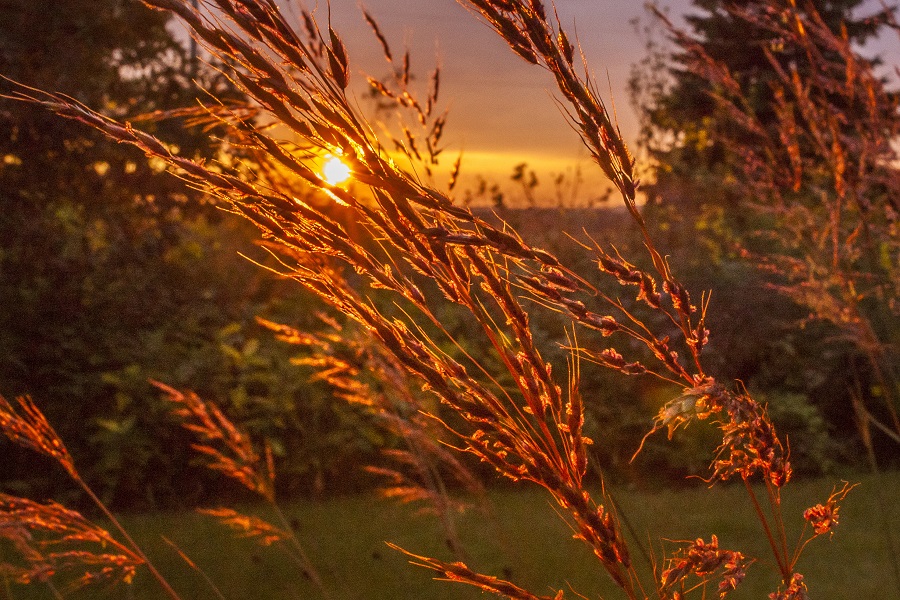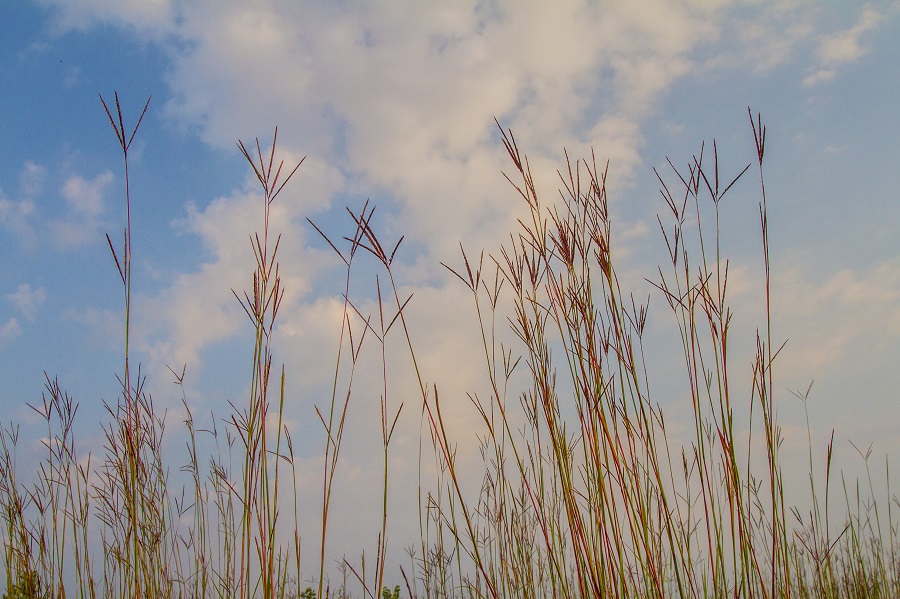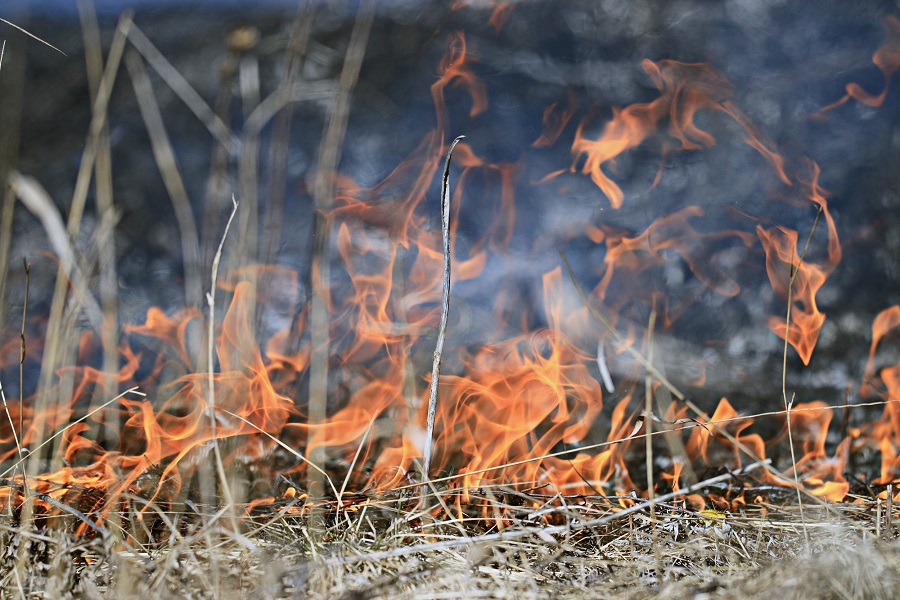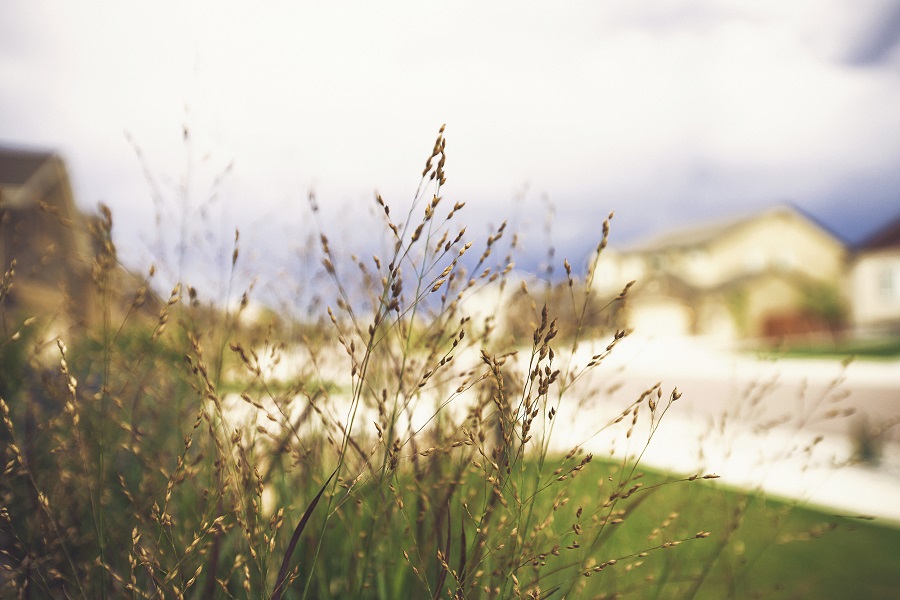Whether you have a cozy, shaded city lot or a sprawling, sunny county acreage, an attractive and healthy lawn is something we all aim for – with varying degrees of success!
But what if you have trouble spots, like a wet and shady corner of the yard that gives you grief every spring. Or a sandy, dry hilltop at the back of your property that just never seems to green-up. What if you’re interested in bringing some depth and height into your landscape but you’d rather not put in high-maintenance bulbs, flowering shrubs, or expensive trees?
Lucky for you, there is an easy solution here: native grasses! Often overlooked as a landscaping option, native grasses shouldn’t be written off so quickly. Many years ago, I used to work for a gardening and landscaping company in Minneapolis. I’ll never forget one of the yards that we managed: it was filled with native grasses and was so unique and low-maintenance that it was one of my favorite properties to maintain.
Keep reading to discover some of the many benefits of landscaping with native grasses!

They’re Attractive Plants – Don’t Mow Them!
That’s right, you read that correctly: native grasses don’t want a haircut. They’ll save you time and money in the yard because they shouldn’t be mowed.
Native grasses come in all sizes – from a mere one foot tall to over six feet! So if you don’t want a towering forest of grasses, you can plant smaller varieties like Itasca Little Bluestem or Sideoats Grama. If, on the other hand, you’re looking to create a privacy screen and would rather have plants instead of a fence, consider Indiangrass – which gets both wide and tall.
Another reason to let native grasses flourish un-clipped is their attractive fall and winter color as well as their beautiful seed heads. When everything else in your garden and landscape has gone dormant, brown, and flat for the winter, your native grasses will stand tall and proud. Not only will they add depth to your landscape in the off-season, the senesced, aboveground stems provide rich gold, russet-red, and deep-orange hues to your otherwise drab winter lawn. That’s right, native grasses change colors just like trees do! My personal favorite for fall color is Big Bluestem, which transitions from a deep blue-green in the heart of summer to a russet-red/gold in the fall.
The best part about native grasses, however, is their seed heads. Native grasses produce lovely flowering seed heads. But they’re not like normal flowering plants! Their seed heads produce tiny little flowers that you can only see up-close. After flowering is over, the seed heads will produce seeds and spread out a bit, eventually dropping their seed and leaving the head remaining as a beautiful centerpiece in your fall and winter garden.

Native Grasses can Handle Tougher Growing Areas
Native grasses are more than just a pretty face. The true beauty of native grasses is that they have evolved survival mechanisms to handle the climate vagaries of their home region. Unlike most introduced turf grasses, native grasses can handle droughts and wet environments with aplomb – often when one extreme follows the other! Depending on your location in the United States, the native grasses in your area have had tens of thousands of years to perfect their ability to withstand even the harshest of growing conditions.
Do you have a wet corner of your yard where traditional turf varieties never seem to establish? Consider planting our Lowland Native Grass Mix. This mix is a blend of medium height (3 to 6 feet tall) native grasses that can handle seasonally damp soils. Is that wet corner also shady? Perhaps consider putting in attractive displays of Canada Wild Rye or Virginia Wild Rye – both of which can handle part shade and damp soils! The bonus is that they have really neat, droopy seed heads that resemble cultivated rye.
What if you have a sandy, dry, or droughty area of your property? Our Upland Native Grass Mix is perfect for those spots that are higher in the landscape and tend to remain dry throughout the season. If your dry area is also wide out in the open and you want something that can handle the baking hot sun, look no further than Little Bluestem. This beautiful shorter prairie grass can handle even the harshest of dry prairie climates.
What if you have poor soils – sandy, clayey, rocky, and inhospitable? Switchgrass or Indiangrass will be your friends here. Tall, dramatic, and strong, these two native grasses are my absolute favorites! How about saline or sodic soils? Revenue Slender Wheatgrass or Rosana Western Wheatgrass are two native grasses that are commonly used on reclamation projects precisely because they can handle saline or sodic soils where nothing else will grow!
An Orderly Landscape or a Wild Landscape…Choices, Choices!
I know what some of you are thinking. “I want an orderly, manicured landscape and not a wild crazy prairie!” And yet others of you reading this will want the exact opposite. You know what? There’s nothing wrong with wanting either scenario. And landscaping with native grasses can give you both.
When planted in a mix and allowed to spread over time, native grasses will form a diverse and lovely prairie. But they work just fine when planted in a manicured garden or a mulched and sculpted bed. If you want to plant them in an existing garden bed, you may want to grow them as seedlings and wait until they are large enough to transplant to your garden. If you plan on seeding a prairie area or spreading them in a corner of your yard, you can direct seed them in the late winter or early spring and let the freeze/thaw cycle work them into the ground to grow.
You’ve Got to Have Patience!
One of the important things to remember about landscaping with native grasses is that they can be slow to take off (except those wheatgrasses, they take off pretty darn quickly!). Don’t expect them to be spectacular in their first year of seeding. Switchgrass and Big Bluestem are notorious for taking a year or two before they really wow you with their height and beauty.
You will also need to irrigate them a little after seeding (if you live in a dry climate) to give the seedlings a running chance. Once they’ve had the opportunity to develop deep roots systems, you won’t need to worry about watering them.
Because they are slow-growers, weed competition can also be an issue. We recommend preparing the seedbed in advance by applying a broad-spectrum herbicide, tilling and preparing your planting area, allowing the second round of weed seedlings to emerge (but don’t let them go to seed!), and then applying a second application of broad-spectrum herbicide. Once you’ve done this, then you’re ready to seed your native grasses.
If you have a particularly weedy area, you can treat with herbicide a couple times and put down an annual grain smother crop (like oats) in the fall. It will die in the winter and in the following spring you can frost seed your grasses.

What About Burning My Native Grasses?
Depending on the size of your planting, you may need to burn your grass plots every few years. Native grasses produce a lot of biomass in the summer and it senesces in the winter but will build up on the ground. This can be a fire hazard long-term and the best way to prevent that is to do controlled burns on your native grass plantings.
The best time to burn native grass stands is in late winter or early spring, before the new shoots have begun to grow. Michigan’s Department of Natural Resources has a wonderful guide on prescribed burning if you want to learn more!
If you’ve planted your native grasses in small plots or as additions to manicured gardens – you don’t have to burn, but you will need to cut the aboveground foliage back in the spring and remove the excess plant material so that new shoots can grow. Make sure you don’t cut away the old plant material in the fall! As perennials, native grasses pull nutrients out of their old, dying leaves to store in the roots and rhizomes over winter. Leave those dying leaves and stems alone until late winter or early spring.
Summer Dormancy and Seeding Time
Just like with introduced turfgrass species, native grasses can be “cool season” grasses or “warm season” grasses. What time of year do you want your grasses to really shine? Cool season grasses (like Wildrye or Wheatgrass) do well in the wet spring and fall but they tend to go dormant in the dry heat of the summer. Warm season grasses (like Indiangrass, Big Bluestem, or Switchgrass) will flourish in the dog days of summer. Keep that in mind when you’re planting them.
And speaking of planting (or seeding), warm and cool season grasses can be frost seeded in the late winter or seeded in the spring. Only cool season native grasses should be seeded in the fall, and you should make sure that there is adequate moisture for them to germinate and grow sufficiently before winter hits. Just don’t forget about weed competition!
A Final Note (or Two!)
Most of the grasses recommended here are ideal for the Midwest or the prairie states. With rare exceptions, many of them will flourish all over the United States. But if you’re looking for native grasses (or other native plants) that are endemic to your specific state, contact your county’s NRCS office for native plant suggestions that are specific to your area.
If you want more information than you could possibly digest in one sitting (in other words, this blog wasn’t enough), cruise on over to the University of Minnesota’s Extension page that is devoted to helping folks develop more sustainable landscaping with native grasses and plants!
Stay Tuned…
If you’re seriously interested in planting native grasses in larger areas, stay tuned. Next week we’ll be publishing a blog article that focuses on establishing and maintaining a Switchgrass stand. We’ll also be sure to include links to great resources that will tell you all you need to know about seeding every kind of native grass out there!



